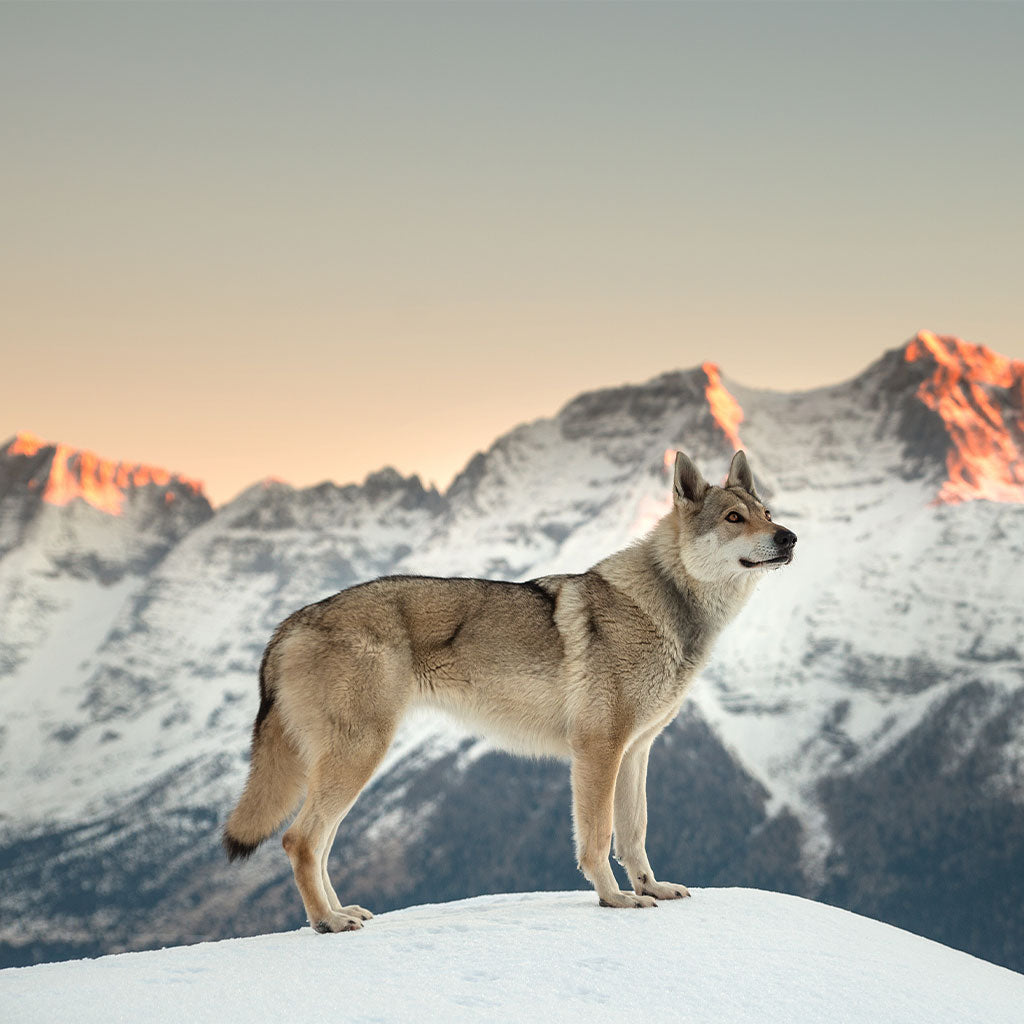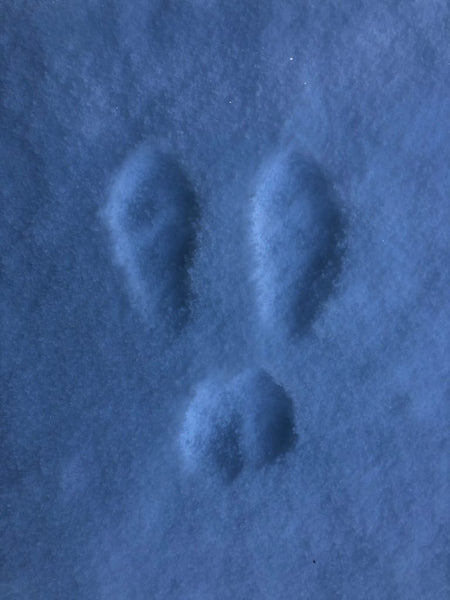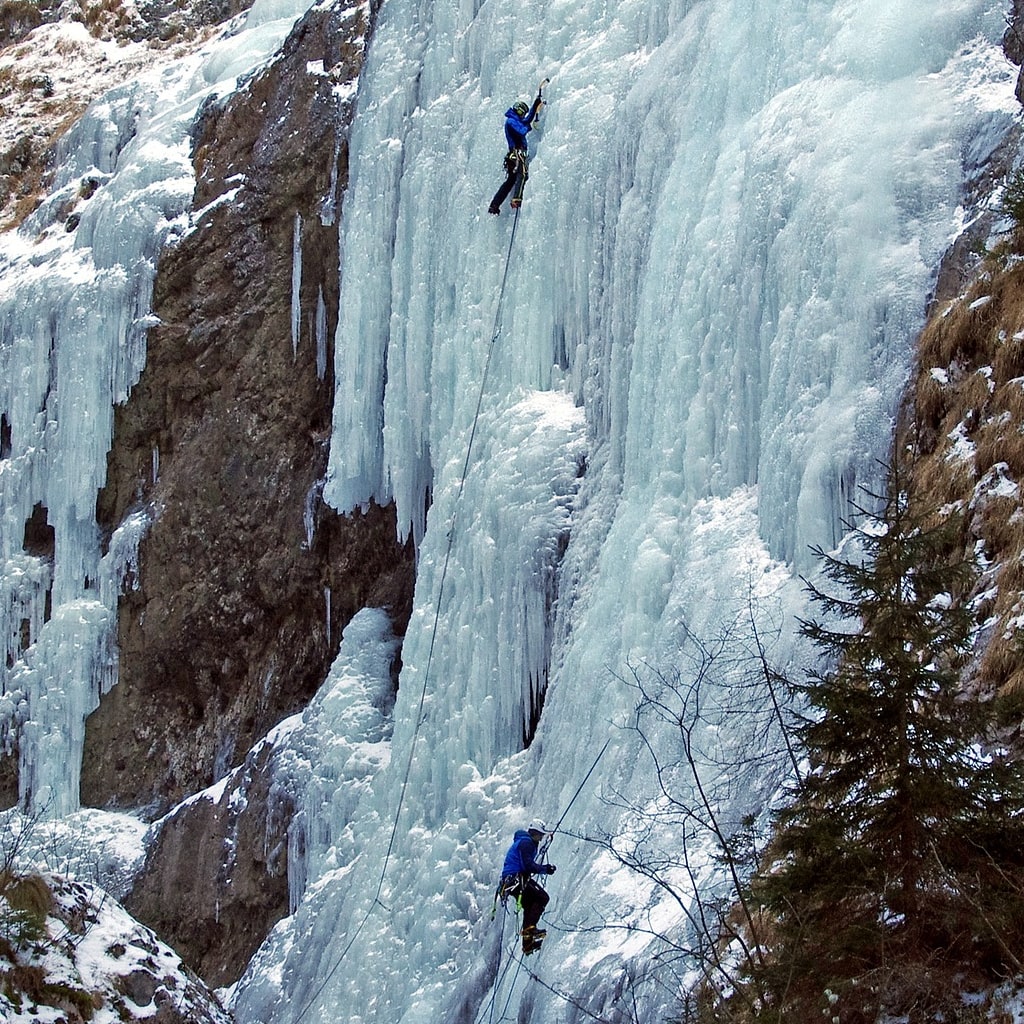Inspired for an Adventure? Check out Beef Stroganoff - Pouch and Beef Stew - Pouch
Free Ground Shipping On All Orders
Over 2,100 Reviews
Add description, images, menus and links to your mega menu
A column with no settings can be used as a spacer
Link to your collections, sales and even external links
Add up to five columns
Add description, images, menus and links to your mega menu
A column with no settings can be used as a spacer
Link to your collections, sales and even external links
Add up to five columns


All things considered, there’s no better time to observe wildlife—or at least evidence of wildlife—than winter. Sightlines expand through barren woods, distant animals stand out darkly against snowfields, and, of course, the white stuff abounds with the tracks and traces of all sorts of critters, large and small.
We’d wager a lot of you who read the Mountain House blog are dedicated winter recreationists. If you’re getting out there cross-country skiing, snowshoeing, or snowmobiling, here are some signs of wildlife to keep an eye peeled for!
A Quick Intro to Snow Tracking
The great thing about snow tracks is how easy they are to find: You’re bound to run across the prints of squirrels, rabbits, birds, and other ubiquitous wildlife even in backyards and city parks. Ski through a snowy wood or prairie, and you’re probably going to cut an awful lot of sign—even if conditions don’t always make it easy to I.D. the different makers.
What with the snowpack’s freeze-melt cycles, the wide variation of its crystalline structure, and the influence of time and weather, the appearance of a track will begin to change soon after it’s laid. A small print can distort misleadingly into a large one, for example. An animal paw or hoof punched through a hard snow crust can leave quite a different-looking mark than one nestled in soft powder. Spend enough time tracking in different conditions, and these kinds of variations will become more familiar.
When you come across the snow trail of an animal, you want to key in to a few basic features:
- The look of an individual track: its shape, size, and configuration.
- How prints in close proximity visually compare to one another.
- The basic arrangement of the trail itself: its width, length, and the angle its constituent prints make with the line of travel.
If you’re at all interested in tracking, it’s a great idea to place a tape measure in your winter pack. Note the width and length of an individual track, doing your best to collect these measurements for both fore and hind prints. The straddle of an animal trail is its maximum width, as defined by the distance between the outside edges of tracks made by opposite feet. The stride is the distance between the front or back edge of one track and the same spot on the next one left by the same foot.
These measurements are useful for identifying the maker of a track, but also for theorizing about its behavior when the trail was laid and—if you’re tracking in a place you visit frequently—even potentially learning to recognize individual animals by the quirks of their “spoor.”
One of the best ways to learn tracking is to study the snow-trail of your romping dog or skulking cat, or to "track down" the prints of an animal you watched crossing a snowy wood or meadow (without actually pursuing or crowding the beast, of course). This approach helps you connect the visuals of a moving animal with the traces it leaves behind.

Estimating a Track’s Age
Especially in winter, you can often roughly gauge when a track may have been laid by looking for the right clues. To do this, you’ll also want to pay attention to the local weather. If it snowed lightly last night and you find paw prints dusted over, for example, you can reason with confidence they were made the day before. Tracks in soft snow with clean edges, not yet broken by little spills of snow, are fresh.
A Roundup of Tracking Tips
Here are some little tidbits of basic information about North American animal tracks you might find useful: a starting point that hopefully will lead you to one of the great tracking books we've listed at the end of this blogpost, or perhaps to an instructor-led field course in the art of interpreting wildlife sign.
- Canids (members of the dog family) have non-retractable claws and therefore their prints often include claw marks in front of the four toes. Felids (members of the cat family) can retract their claws and so often their prints lack claw marks. By no means, however, is this an ironclad distinguishing feature: A bobcat or puma struggling up a snowy hillside may sometimes leave claw marks, while the claws of a dainty red fox trotting over hard-crusted snow often won't register.
- A more acute way to distinguish canid and felid tracks is to look at the front of the mark left by the plantar or “heel” pad (the one behind the four toe pads). Cats have two lobes at the front of their plantar pads; dogs have one.
- Roughly speaking, a cat’s track is wider than it is long; the opposite is usually true for a canid print. Felid prints have a sort of circular look to them, whereas canid prints are more rectangular in shape.
- It can be difficult to distinguish the prints of a domestic dog from those of a coyote or wolf. While wolves generally have larger paws than dogs of the same size, man’s best friend comes in such a range of sizes that measurements alone aren’t foolproof I.D. features. However, a canid trail that wanders and loops around a lot and which shifts frequently between trots and gallops may more likely be a dog’s than one of its wild relatives, which tend to be more conservative of their energy. Also, as James Halfpenny notes in his excellent A Field Guide to Mammal Tracking in North America, domestic dogs are often “sloppy walkers” compared to foxes, coyotes, or wolves, and their hind prints don’t overlap with their front ones—a characteristic of both wild canids and felids—as frequently.
- You may see some blood marks in the trails of canids during late winter. Often this isn’t the sign of a wounded coyote or wolf, but rather a female in estrous.
- With practice, you can typically distinguish between the commonly encountered trails of rabbits and tree squirrels—which, given the animals’ light weights, often include somewhat indistinct prints—by size, but there are other clues to look for. In bounding, both kinds of furballs place their larger hind feet in front of their smaller front paws. But the layout differs: The two front prints of a tree squirrel will parallel one another in a straight line, while those of a cottontail (or snowshoe hare) lie at a diagonal.
- Members of the weasel family—the mustelids—come in a wide range of sizes, but all have a distinctive toe arrangement that’s useful to learn. A mustelid paw has five toes, the two outer ones located lower down and the three middle ones typically aligned roughly in a row up front. Very often one or another of the outside toes won’t register, leaving a four-toed print that could potentially be confused with a canid or felid, but the almost straight-line cluster of those three middle pads (which usually always register) should be a giveaway.
- Speaking of mustelids, when skiing or snowshoeing along rivers or lakes, keep an eye out for the clawed, five-toed prints of river otters (which may or may not show webbing). Even if you don’t luck out with an actual otter sighting, you can get a sense for the water-weasel's exuberance coming across one of the characteristic snow slides that often break up its trails.
- In much of the American West, multiple members of the deer family share the same range. There can be some overlap in size, but the hoofprints of mule and white-tailed deer are usually substantially smaller than an elk’s or moose’s. Elk tracks are also rounder both in outline and in hoof-tip than those of deer. Moose tracks will be as large or larger than an elk’s but more elongate and with more pointed tips. In all deer species, the two dewclaws behind the hoof often register in deep snow.
- If you’re lucky, you may come across the symmetrical feathered marks left behind by a bird’s wings in snow. Occasionally large versions of these will "conclude" the trail of a rabbit, rodent, or weasel: evidence of a bird of prey—a great horned owl, for example—swooping down on its furry victim.
Other Winter Wildlife Sign
Spend enough time scrutinizing animal tracks, and you’ll probably start learning a thing or two about poop. That’s right: Animal droppings can be diagnostic as well—the pellets of deer and rabbits, the hairy, ropey, bone-flecked leavings of a canid—and also full of clues about what a given critter’s been feeding on. Most good animal-tracking guides have reference keys for scat as well as prints.
Bird feathers are somewhat easier to come across in winter than other seasons, given they’re more conspicuous lying on snowpack than groundcover or duff. The U.S. Fish and Wildlife Service maintains an online “Feather Atlas” for identifying feathers of North American birds—an awesome resource!

Additional Resources
There are many great tracking books on the market, such as Olaus Murie’s classic Peterson’s Field Guide to Animal Tracks (now available in an edition updated by Mark Elbroch); James Halfpenny’s Scats & Tracks of North America (his aforementioned Field Guide to Mammal Tracking is out of print); and Mark Elbroch’s Mammal Tracks & Sign.
It’s very easy—and very rewarding—to get the tracking bug, and winter is the most tracking-friendly season for the beginner. This is one of those skills you’ll continue to hone throughout your life, and you don’t need any fancy equipment to pursue it. Start paying attention to those trackways you cross on the ski or snowshoe trail, and a whole hidden dimension of the wild opens up!

How to Survive in Cold Weather in the Wilderness

A Beginner’s Ice-Climbing Guide: How to Get Started


Stay Hungry for Adventure
Sign Up for Delicious Outdoor Meals & Exclusive Offers!
By clicking ‘Join Now’, I agree to the Terms of Service and Privacy Policy.


Join the adventure
©2026 Mountain House — All Rights Reserved.
Your Cart is Empty
Continue ShoppingYour Cart
Subtotal
$0.00
EXPRESS PAYMENT METHODS AVAILABLE IN CHECKOUT
Taxes and Shipping Calculated at Checkout
Your ExpertVoice deal.
$[Deal Price]
$[Original Price]
Discount applied at checkout.
On sale now — lower than your ExpertVoice discount.
Not eligible for ExpertVoice discount.














